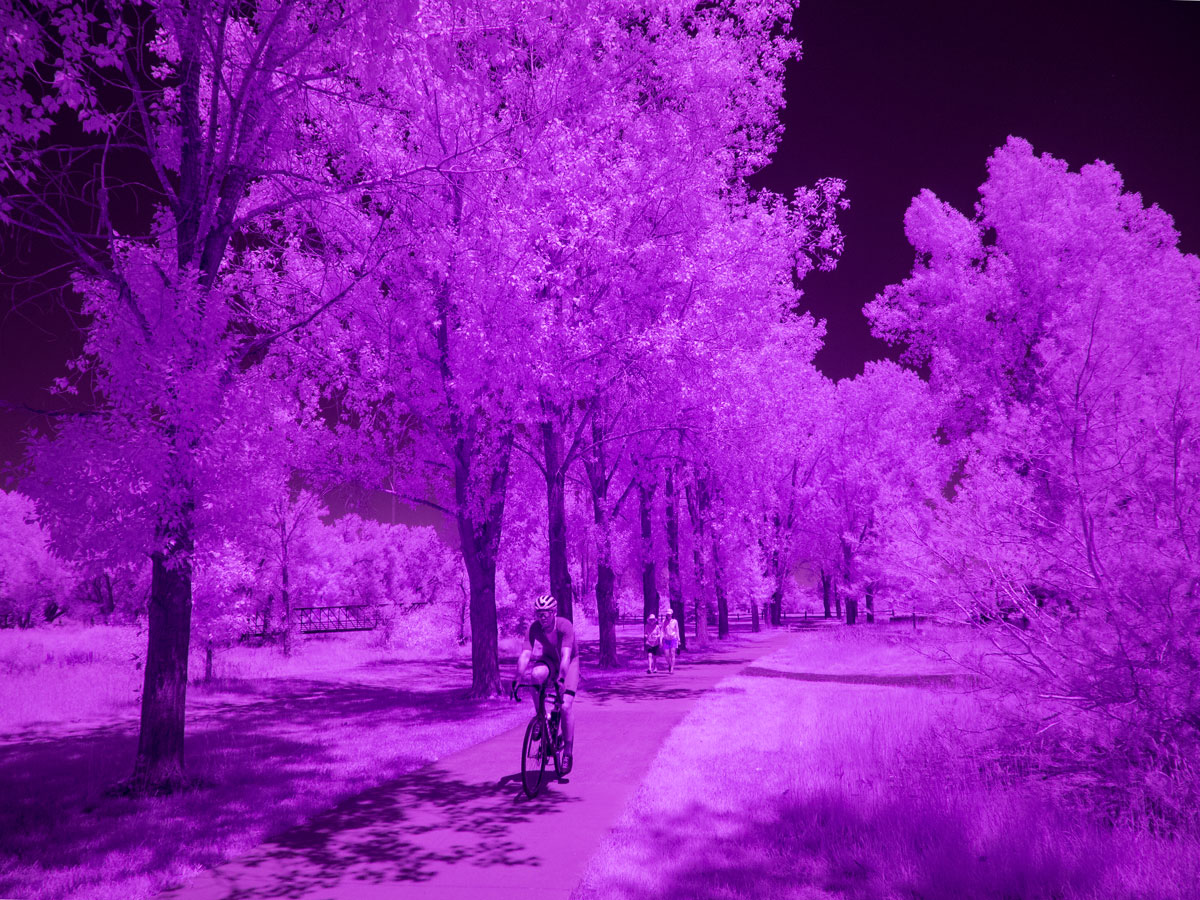This is Part III: For this three-part series, I wanted to answer a question about black and white infrared photography that I previously asked and shoot a similar image as I did for that post and process the RAW file into black and white, to see if I could get the perfect, classic black and white image. I think I did it this time. What do you think?
Today’s Post by Joe Farace
“To see in color is a delight for the eye but to see in black and white is a delight for the soul.” — Andri Cauldwell
 Sunday, June 23 looked like a perfect Infrared Day. It was 88 degrees F, sunny and hot and for a short while there was a cool breeze blowing across McCabe Meadows, at least it did until the temperature hit 90 degrees F.
Sunday, June 23 looked like a perfect Infrared Day. It was 88 degrees F, sunny and hot and for a short while there was a cool breeze blowing across McCabe Meadows, at least it did until the temperature hit 90 degrees F.
In previous posts in this series I first photographed a similar scene with a Panasonic Lumix GX1 that had Life Pixel’s Hyper Color (no nanometer rating) infrared conversion. On my second shoot in the same place, I used a Lumix G6 that had their Enhanced IR (665nm) filter and this, my most recent shoot, was made with a Lumix G5 with Standard IR (720m) IR conversion. The lens used was the Lumix G Vario 12-32mm f/3.5-5.6 kit lens that I borrowed from my Lumix G6. The RAW image file is shown at right.
How I Made this Infrared Shot: The camera/lens I used combination was the aforementioned Panasonic Lumix G5 converted for Infrared Capture by Life Pixel with their Standard IR filter. The lens was the Lumix G Vario 12-32mm f/3.5-5.6 kit lens at 12mm. For some reason, whenever I use this lens, I usually just leave it at 12mm, which produces a 24mm equivalent field-of-view. (I need to try some infrared shots with the Olympus 9mm f/8 Fisheye Body Cap Lens for Micro Four Thirds.)
The photograph was captured using RAW+JPEG capture with the camera in monochrome mode giving me a black and white (JPEG) preview of the image, although, as you can see, the RAW file is anything but… The Av exposure was 1/3200 sec at f/4 and ISO 400. For an explanation of this unusual choice of aperture/shutter speed, please read “Stupid (Infrared) Photographer’s Tricks.” whose title gives you some idea of why.
What’s it Like in Black & White
The original RAW file was rotated one degree clockwise in Photoshop CS6 and then re-cropped into its original and default 4:3 aspect ratio. Next, I opened the RAW file in Adobe Camera RAW and tweaked it slight using the Clarity and Vibrance sliders. (I usually set them at “10.”) Then I opened the (slightly) cropped file in Silver Efex and used the Full Dynamic (Smooth) preset and adjusted some of the sliders to produce the result you see below.

In Silver Efex, the first thing I typically do after selecting a preset is move the Grain, Smooth slider all the way to the left to minimize any noise. Next, I’ll typically move the Brightness slider to reproduce the full, white foliage Wood Effect look. Then I’ll bump the Contrast slider to make the blacks blacker. Sometimes I’ll move the Structure slider but you need to be careful with this one because it can also amplify the noise in the image, even if there is little to start with.
After opening the file back into Photoshop, I’ll double-check the Levels and in the case moved the left and right edges of the curve inwards a little. I resisted the urge to add the Platinum tone as I did win Part 2 of this series. I love the platinum prints of Frederick Evans, but its easy to overdo effects, (That’s another one of Farace’s Laws.) But I did apply the Glamour Glow filter that’s part of Color Efex to give it a little of the classic infrared glow/
 I’ve found that Life Pixel does a great job with IR conversions and they’ve done most of the conversions for my Canon DSLRs and all of my Panasonic Lumix G-series cameras. This is not a paid or sponsored endorsement, just my experience.
I’ve found that Life Pixel does a great job with IR conversions and they’ve done most of the conversions for my Canon DSLRs and all of my Panasonic Lumix G-series cameras. This is not a paid or sponsored endorsement, just my experience.
New copies of my book, The Complete Guide to Digital Infrared Photography are currently available from Amazon for $25 while used copies are starting at four bucks as I write this. Creative Digital Monochrome Effects has a chapter on IR photography and new copies are available from Amazon for $11.46 with used copies starting at a little more than six bucks, which is a heckuva deal.